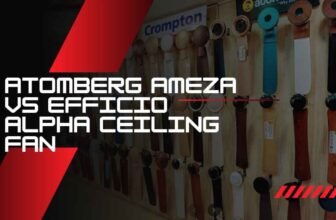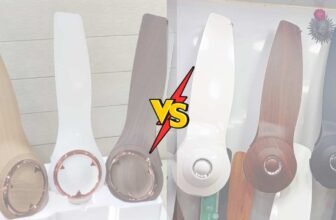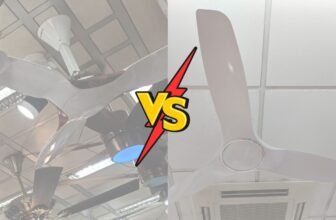
Have you ever had to decide between a Brushless Direct Current (BLDC) fan and a normal fan and wondered which one consumes less electricity? Well, with the surging competition in the market, it’s become crucial to choose electrical appliances wisely for the sake of cost efficiency and environmental consciousness. Nowadays, the emergence of technologically advanced fans like the BLDC fans is challenging traditional fan models in terms of energy consumption. So, in this blog, we will meticulously compare the electricity consumption of BLDC fans and normal fans, illuminating your path to a more informed choice. Before going into electricity consumption between BLDC Vs Normal Fan, first understand how BLDC and Normal ceiling fan work.
Key Takeaways
- BLDC fans are more energy-efficient than traditional ceiling fans.
- Understanding electricity consumption is vital for choosing the right fan.
- Electric fan efficiency comparison can lead to significant cost savings.
- Fans with varied speed settings can impact overall energy use.
- Eco-friendly ceiling fans like BLDC contribute to lower environmental impact.
Understanding Ceiling Fans: A Brief Overview
Ceiling fans are key to a comfy home. They cool spaces, improve air flow, and boost air quality. Knowing about ceiling fans helps homeowners make their homes better for comfort and looks.
The Role of Ceiling Fans in Modern Homes
Ceiling fans do more than just cool. They help keep the temperature steady, which is great for places with changing weather. They also cut down on air conditioning costs, saving money on bills. Plus, they make the air move well, making homes feel nicer.
Different Types of Ceiling Fans
There are many ceiling fan types, each for different needs. Here’s a quick look at some popular ones:
| Ceiling Fan Type | Key Features | Ideal Use |
|---|---|---|
| Standard Ceiling Fans | Traditional design with multiple blades for airflow | Living rooms, bedrooms |
| Hugger Ceiling Fans | Low-profile design, mounted close to the ceiling | Rooms with low ceilings |
| BLDC Ceiling Fans | Energy-efficient, brushless motor technology | All rooms, especially where energy savings are crucial |
Knowing about ceiling fan types helps people choose the best one. This choice can make their home more comfortable and energy-smart. It’s a step towards a greener lifestyle.
The Basics of Electricity Consumption
Knowing about electricity consumption is key for every home. It helps us see how different appliances use energy. By learning about electricity basics, we can make better choices about our energy use. This can lead to lower electricity bills.
This section will cover what electricity consumption is and how it’s measured. We’ll look at how various devices, like ceiling fans, affect our energy use.
What is Electricity Consumption?
Electricity consumption is the energy used by devices over time. It’s usually shown in kilowatt-hours (kWh). This means the energy used by a 1,000-watt appliance in one hour.
Knowing how appliances use energy helps us understand our bills better. Ceiling fans, for example, are important for comfort but can raise electricity costs if not used wisely.
How is Electricity Consumption Measured?
Measuring electricity usage means tracking how much energy each appliance uses. An electricity meter can do this by measuring the electricity flow to your home. More detailed methods include energy monitors that show how each device performs.
By keeping an eye on your energy use, you can spot patterns. This helps you use energy more efficiently and cut down on your bills.
Introducing BLDC Technology
New tech is changing how we live, making homes more comfortable and energy-smart. BLDC technology is at the forefront, bringing us BLDC fans. These fans are a modern choice, offering better energy use and performance than old ceiling fans.
What is a BLDC Fan?
A BLDC fan, or Brushless Direct Current fan, uses a special motor. This motor is different from the ones in old fans. It has a permanent magnet rotor, making it quieter and smoother.
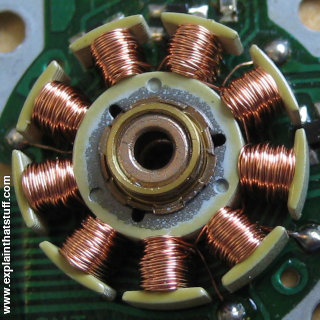
These fans run on live electrical currents, which means less noise and longer life. They are perfect for today’s homes. Their design also makes them very energy-efficient, cutting down on electricity use.
Key Features of BLDC Fans
BLDC fans are getting popular for good reasons. Here are some of their best features:
- Energy Efficiency: BLDC fans use much less electricity, saving you money on bills.
- Quiet Operation: They’re almost silent, great for bedrooms and quiet areas.
- Advanced Speed Control: You can adjust their speed precisely, making them more enjoyable to use.
- Longer Lifespan: With fewer parts, they need less upkeep and last longer.
BLDC fans offer more than just comfort. They help you use less energy, which is good for the planet. As people focus more on saving energy, BLDC fans are becoming the preferred choice.
Normal Ceiling Fans Explained
Understanding traditional ceiling fans helps us see how they work and what they look like. These fans use alternating current (AC) motors. They have a few key parts that make them work well. Their design also affects how they look.
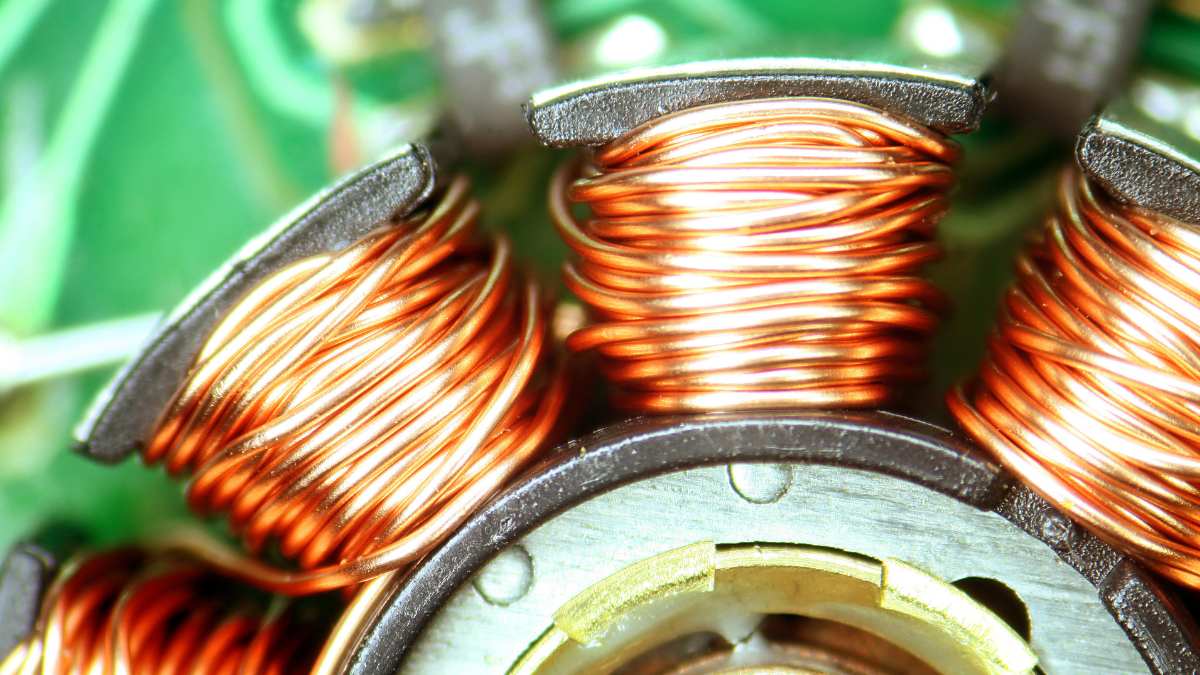
The Traditional Ceiling Fan Mechanism
The design of traditional ceiling fans is simple but effective. An AC motor powers the fan, making the blades move. This movement helps air move around a room. The main parts are:
- Motor: The motor is the fan’s heart, turning electrical energy into movement.
- Blades: Made from wood, plastic, or metal, the blades shape affects air flow.
- Pull Chains or Switches: These let you change the fan’s speed and turn it on or off.
Common Features of Normal Ceiling Fans
Normal ceiling fans have some standard features that make them useful. These features help fans work better and are easier to use. They include:
| Feature | Description |
|---|---|
| Speed Settings | Most fans have different speed options, letting you control how much air moves. |
| Blade Design | The shape and angle of the blades affect how they look and how well they move air. |
| Remote Control | Some fans come with remote controls for easier use. |
| Light Fixtures | Adding lights to ceiling fans makes them more versatile for lighting. |
Knowing about these features helps people choose the right fan. It’s especially useful when comparing traditional fans to modern ones.
BLDC Vs Normal Ceiling Fan Electricity Consumption
BLDC fans use less electricity than normal fans. They are more energy-efficient. A BLDC fan uses 30-50% less power than a traditional fan. This means lower bills and less harm to the environment.
Standard ceiling fans need 70-100 watts to work well. But, a BLDC fan uses only 28-38 watts. This big drop in power use shows how important energy-saving fans are today.
Here’s a comparison of the power consumption and cost if you run each fan for 10 hours per day:
| Parameter | Normal Ceiling Fan (70W) | BLDC Ceiling Fan (35W) |
| Power consumption per hour | 70W | 35W |
| Energy units consumed per hour | 0.07 kWh | 0.035 kWh |
| Energy units consumed in 24 hours | 1.68 kWh | 0.84 kWh |
| Per hour | ₹0.49 | ₹0.245 |
| Per day (24 hours) | ₹11.76 | ₹5.88 |
| Power consumption per 10 hours | 700W | 350W |
| Energy bill per 10 hours | ₹4.9 | ₹2.45 |
| Energy bill per year (365 days, 10 hours/day) | ₹1,788.5 | ₹894.25 |
Choosing a BLDC fan over a normal one saves a lot of energy. Knowing these facts helps people make better choices. It improves their comfort and helps save energy.
Energy Efficient Ceiling Fans: What You Need to Know
Energy-efficient ceiling fans are a great choice for modern homes. They offer comfort and help save the planet. By choosing these fans, you can cut down on electricity bills and breathe cleaner air indoors. This section will show you why these fans are a smart pick and what makes them special.
Benefits of Using Energy-Efficient Fans
Energy-efficient ceiling fans have many perks. They use less electricity than old fans, which means lower bills. They also put less strain on the electrical system, helping to reduce carbon emissions. Other benefits include:
- Quieter operation while maintaining optimal performance.
- Longer lifespan due to advanced motor technology and design.
- Possibility of integration with smart home systems for added convenience.
Top Characteristics of Energy-Saving Ceiling Fans
When picking energy-saving fans, look at their key features. These include:
- Motor Technology: Brushless DC motors are commonly used, providing higher energy efficiency compared to traditional fan motors.
- Blade Design: Aerodynamically designed blades improve air circulation and reduce energy consumption.
- Smart Controls: Many models now come equipped with smart features, allowing users to adjust settings remotely or set timers for optimal usage.
- Certification Labels: Look for ratings from agencies like the Bureau of Energy Efficiency (BEE) to ensure optimal energy performance.
Understanding these benefits and features helps homeowners make the best choice. They can pick energy-efficient ceiling fans that save money and support sustainable living.
Comparing Fan Power Consumption
Choosing the right ceiling fan is key to saving electricity. This section looks at how BLDC fans compare to normal ceiling fans. It shows how these fans can help you use less electricity.
The Power Consumption of BLDC Fans
BLDC fans are very efficient. They use less power than regular fans. For example, a BLDC fan might use 28-35 watts.
This means you can save a lot on your electricity bills. Studies show BLDC fans can save up to 65% of power compared to old fans. They are clearly better in saving energy.
Power Usage of Normal Ceiling Fans
Traditional ceiling fans use more power, between 70-100 watts. This can lead to higher electricity costs, especially if they’re on for a long time. The costs add up over a year.
Knowing these differences helps you choose a fan that saves energy. This choice can make your home more comfortable and save money in the long run.
Factors Affecting Fan Efficiency
Knowing what affects fan efficiency is key to better performance and saving energy. Fan size and design are crucial. They decide how well a ceiling fan works. The design affects airflow, and the size makes sure the fan fits the room.
Size and Design of the Fan
Choosing the right fan size and design is vital for cooling and saving energy. Big fans move more air but use a lot of energy if not designed right. A fan that’s too small for a room uses more power because it has to work harder.
BLDC fans with aerodynamic blades are efficient. They move air well without using a lot of energy.
Speed Settings and Their Impact on Consumption
The speed settings of a fan affect comfort and energy use. Higher speeds use more energy. Lower speeds use less energy but still move enough air.
This balance helps users stay comfortable without spending too much on energy. It’s important to think about the speed you need when picking a fan.
Eco-Friendly Ceiling Fans for Sustainable Living
Adding eco-friendly solutions to modern homes is key. These solutions cut down on energy use and help the environment. Eco-friendly ceiling fans are a big help in reducing carbon footprints and saving energy.
Importance of Eco-Friendly Home Solutions
Choosing eco-friendly home options is good for the planet. They help use less and waste less. Ceiling fans that use less power are great for those wanting a greener home.
How BLDC Fans Contribute to Lower Environmental Impact
BLDC fans are great for the environment because they use less energy. They save money on bills and cut down on carbon emissions. Plus, using them can get you government incentives, making them even more appealing.
| Feature | BLDC Fans | Normal Ceiling Fans |
|---|---|---|
| Energy Consumption | Up to 50% less electricity | Standard consumption |
| Carbon Footprint | Lower emissions | Higher emissions |
| Lifespan | Longer lifespan | Average lifespan |
| Noise Levels | Quieter operation | More noise |
| Sustainability | High | Moderate |
Conclusion
Choosing the right ceiling fan can really help with your electricity bills and the environment. BLDC fans are more efficient than old-fashioned fans. They use less power but cool just as well, making them popular in India.
Energy-efficient fans do more than save money. They also cut down on harmful emissions, helping the planet. So, picking a BLDC fan is a smart choice for any home.
More people are choosing sustainable living, and energy-efficient fans are key. Knowing how fans use energy helps us make better choices. Switching to BLDC fans is not just a trend; it’s essential for today’s homes.



